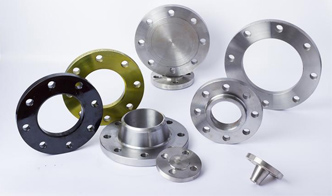Current location:
ansi 150lbs
Date:2025-08-18 01:39:59 Read(143)

Understanding Seam and Seamless Pipes Pipes are essential components in various industries, serving as conduits for liquids, gases, and sometimes even solids. Among the different types of pipes, two popular categories are seam pipes and seamless pipes. Each type has its unique manufacturing processes, characteristics, and applications that make them suitable for particular purposes. What are Seam Pipes? Seam pipes, also known as welded pipes, are manufactured by rolling pre-fabricated steel plates or sheets into cylindrical shapes and then welding the edges together. This process gives rise to what is termed the 'seam' of the pipe. Seam pipes can be produced using various welding techniques, including electric resistance welding or submerged arc welding, among others. The welding process can lead to various advantages. For instance, seam pipes are generally more economical to produce compared to seamless pipes, making them a preferred choice in applications where cost is a significant factor. However, the seam in a welded pipe can be a weak point, which limits its application in high-pressure environments. What are Seamless Pipes? In contrast, seamless pipes are manufactured through a different process that does not involve welding. Instead, they are made by extruding a solid round steel billet into a hollow tube and then expanding it to achieve the desired dimensions. This manufacturing method allows for a smooth and uniform structure without any seams. The absence of seams makes these pipes highly favored in critical applications where strength and reliability are paramount. Seamless pipes can withstand higher pressures and are less prone to failures due to the absence of weld joints. This characteristic makes them ideal for oil and gas industries, power generation, and high-temperature systems. seam and seamless pipe Key Differences The primary difference between seam and seamless pipes lies in their manufacturing processes, leading to variations in their physical properties. Seam pipes, while cost-effective, may have limitations in pressure and temperature applications due to potential weaknesses at the welded joint. In contrast, seamless pipes, known for their durability and integrity, are more suitable for high-stress environments but come at a higher production cost. Additionally, the performance of the pipes is influenced by their wall thickness. Seam pipes tend to exhibit variations in strength along the weld seam, which can lead to issues under stress. Conversely, seamless pipes provide uniform strength throughout, making them a dependable option in critical applications. Applications Seam pipes find extensive usage in various sectors, particularly where cost is a driving factor. They are commonly used in plumbing, structural applications, and low-pressure systems. Many manufacturers incorporate seam pipes for transporting water, oil, and gas in scenarios where moderate pressures are encountered. On the other hand, seamless pipes are crucial in industries that demand superior performance under extreme conditions. Their robust nature makes them essential in oil drilling, chemical processing, and industries involving high-pressure steam systems. Seamless pipes are also commonly utilized in the automotive sector, aerospace, and nuclear power plants. Conclusion In conclusion, the choice between seam and seamless pipes largely depends on the specific requirements of a project. Factors like cost, application, pressure handling, and environmental conditions must all be considered when selecting the appropriate type of pipe. Understanding the fundamental differences between seam and seamless pipes can help engineers, project managers, and stakeholders make informed decisions that enhance the safety and efficiency of their operations. As industries continue to evolve and demand increases for high-performance materials, both seam and seamless pipes will play crucial roles in meeting these challenges.
Share:
Previous: cost of galvanized pipe
Next: Atlas Equipment Manufacturer in Hebei China specializes in manufacturing top-quality equipment.
Kind tips:The above content and pictures are compiled from the Internet and are for reference only. I hope they will be helpful to you! If there is any infringement, please contact us to delete it!
You may also like
- Choosing the Right Gravel for Your Sump Pump Installation and Effective Drainage Solutions
- Exploring the Impact of ANSI Standards on Modern Technology and Industry Practices
- Different Types and Uses of Flanges in Various Applications
- Concentric reducer flange for efficient connections in piping systems and equipment applications
- Exploring ANSI Class 125 Standards for Industrial Applications and Performance Requirements
- Exploring the Fundamentals of ANSI Class 1500 Standards and Their Applications
- Exploring the Role of Sump Pumps in Mining Operations and Their Efficiency in Water Management
- asa 600 flange
- Butt Weld Pipe Techniques and Applications for Effective Piping Solutions